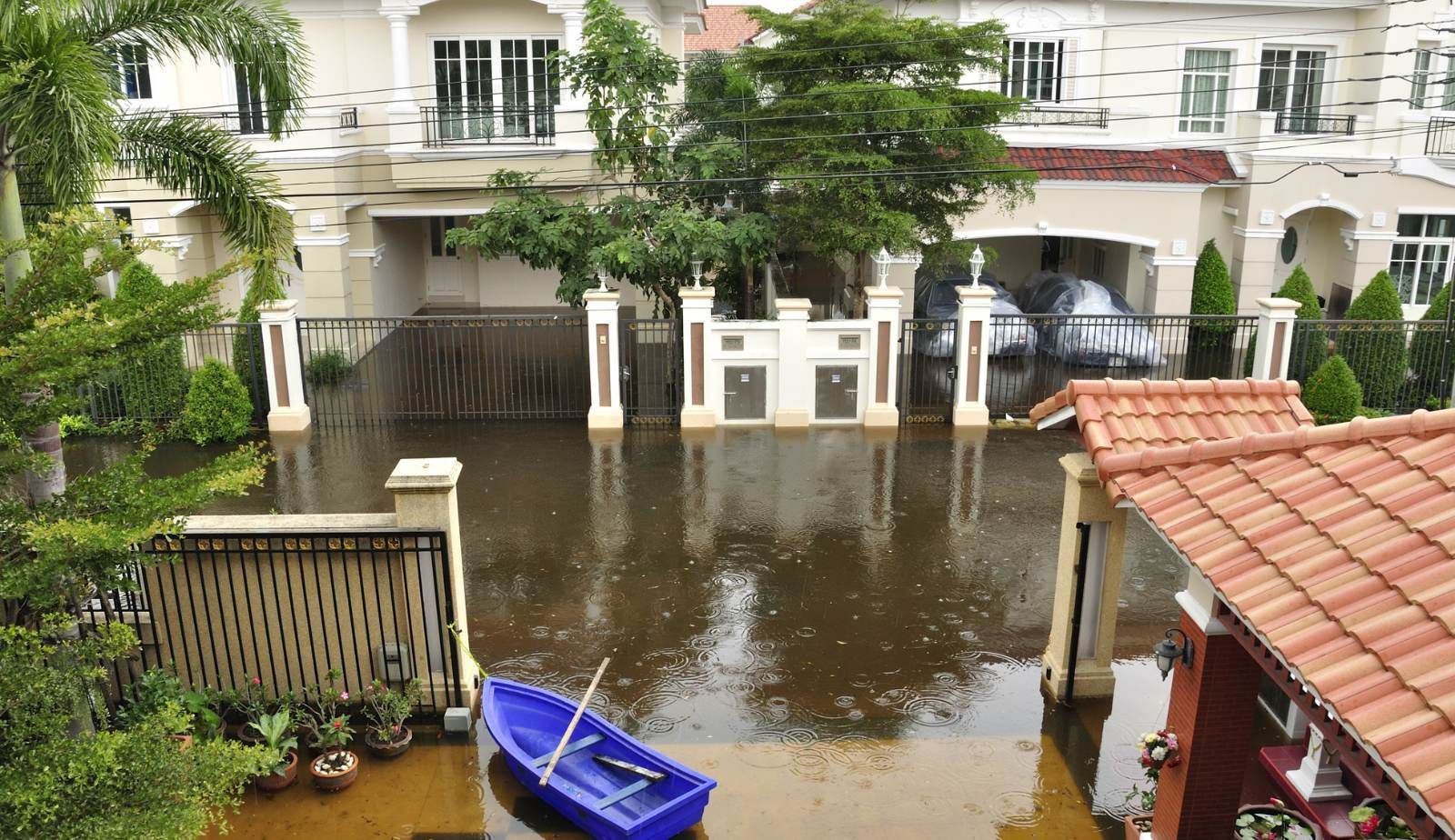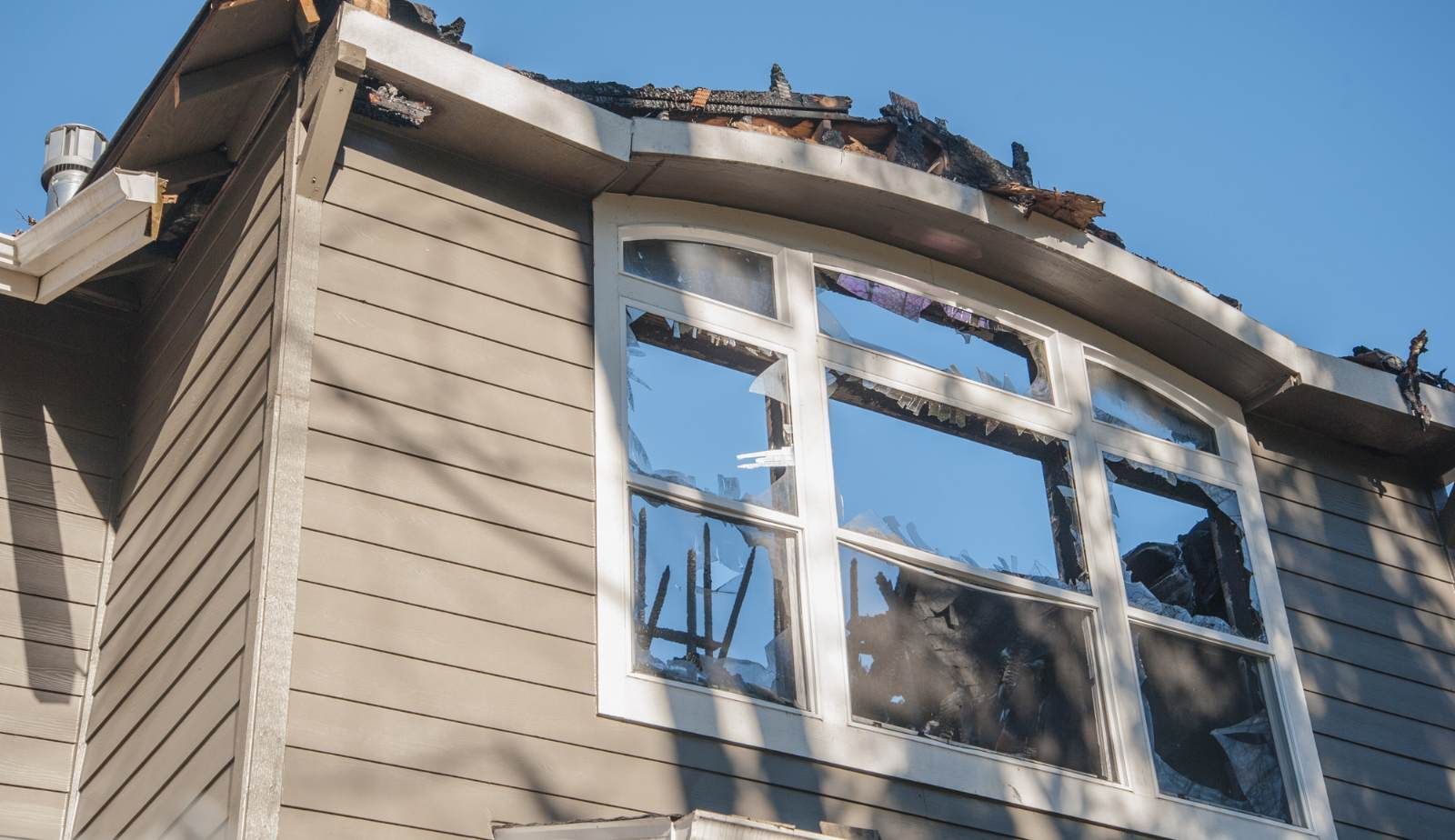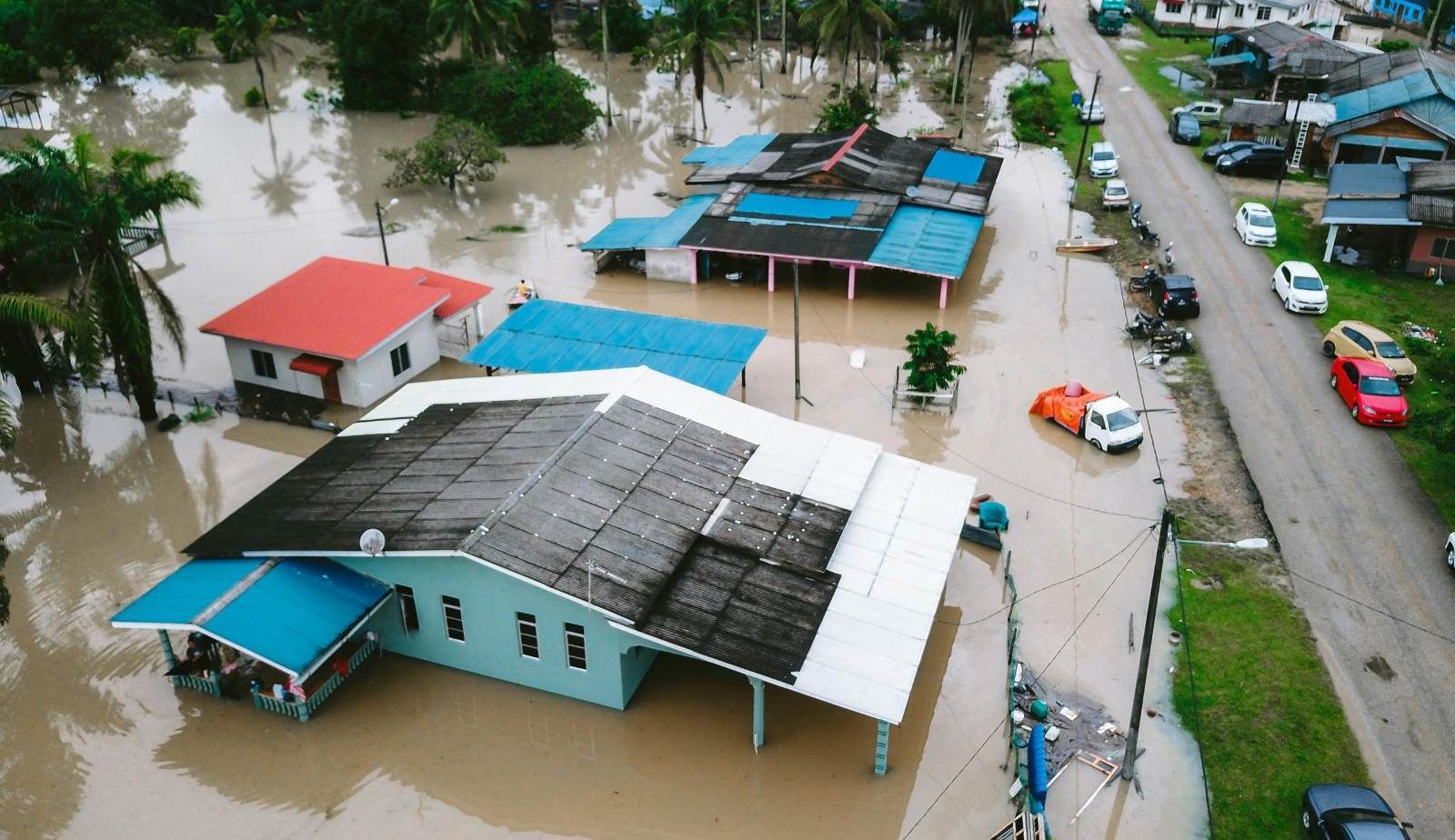Preserving the Past: The Devastating Impact of Water Damage on Historical Buildings
The article explores the impact of water damage on historical buildings, including the significance of historical buildings in cultural preservation, common causes of water damage, the impact on architectural features, challenges in restoration, techniques and strategies in water damage restoration, the importance of community engagement, preventive measures for water damage mitigation, and adaptation strategies for flood-prone historical buildings.
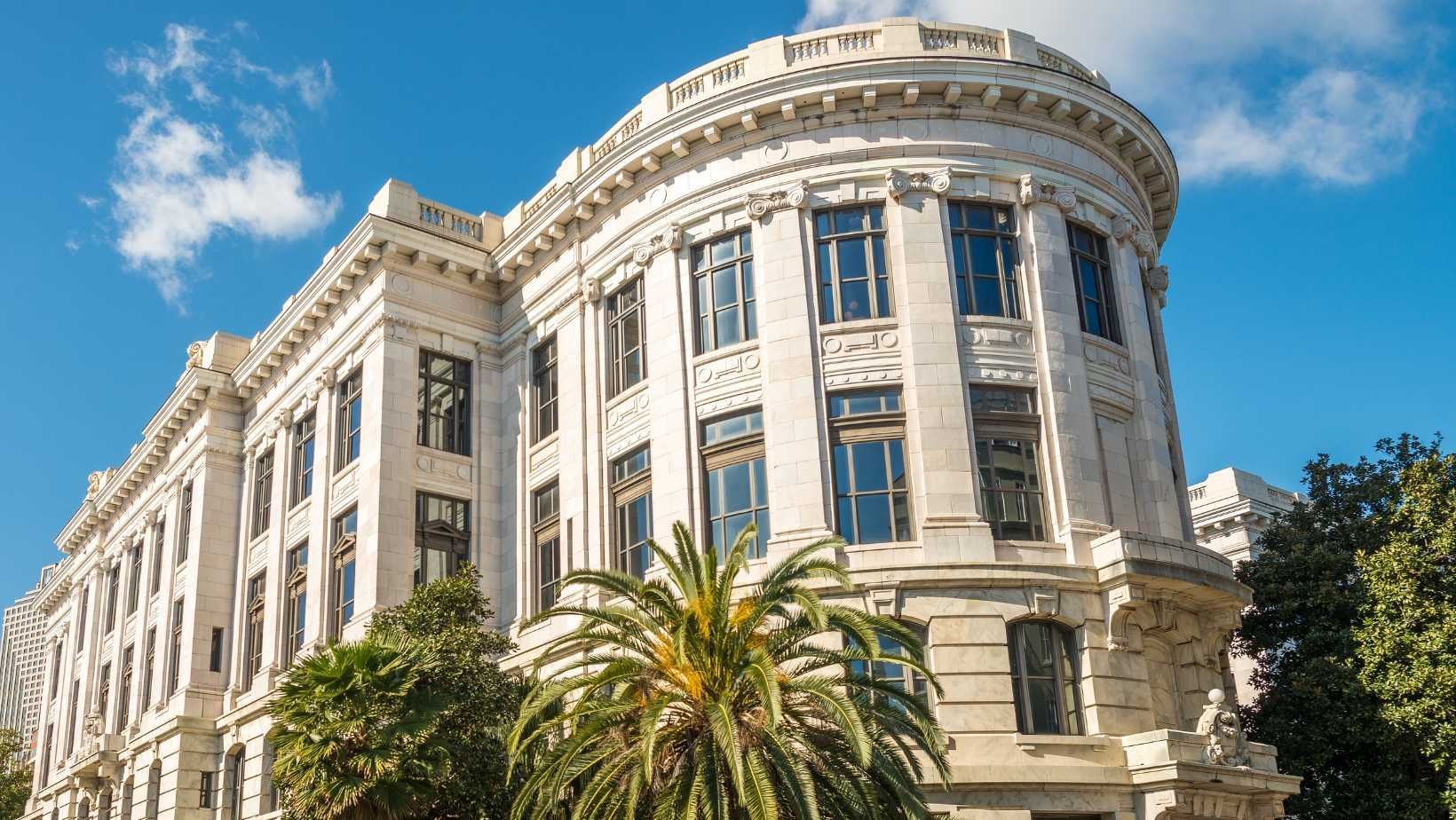
Introduction to Water Damage on Historical Buildings
Historical buildings are not just physical structures but repositories of collective memory and cultural heritage. They offer tangible connections to the past, providing insights into the architectural styles, construction techniques, and societal norms of bygone eras. For example, the preservation of a 17th-century manor house showcases the intricate craftsmanship of that time period, from the ornate plasterwork to the hand-carved wooden fixtures. These architectural treasures serve as living artifacts that narrate the stories of past generations, reflecting the evolving cultural landscape of society.
The impact of water damage on historical buildings goes beyond surface-level deterioration, affecting the very essence of these structures. Moisture infiltration can lead to efflorescence, staining, and decay of masonry elements, compromising both the aesthetic appeal and structural integrity of historical buildings. Consider the restoration of a water-damaged colonial-era church, where the infiltration of water caused severe spalling of the stone walls, necessitating extensive repairs to prevent further damage. [Mold growth](https://www.drymaxrestoration.Water damage not only mars the visual charm of historical buildings but also poses health risks to occupants and preservation specialists. Learn more about preventing water damage and mold infestation.
By understanding the profound impact of water damage on architectural features, preservation efforts can be tailored to address these challenges effectively. Preservation of historical buildings is crucial for maintaining a diverse and inclusive historical narrative that celebrates the contributions of various communities and groups. These structures serve as tangible links to the past, fostering a sense of continuity and identity within communities. For instance, the restoration of a 19th-century town hall not only preserves the architectural grandeur of the past but also honors the civic achievements and cultural significance associated with the building. By safeguarding historical buildings from water damage, we ensure that our cultural heritage remains intact for future generations to cherish and learn from.
Significance of Historical Buildings in Cultural Preservation
Historical buildings play a pivotal role in cultural preservation by serving as tangible reflections of the past. They offer insights into the architectural, social, and technological advancements of previous eras, providing a window into the cultural evolution of society. For example, the restoration of a 15th-century castle not only preserves the medieval architectural style but also highlights the defensive strategies and construction techniques prevalent during that period. By maintaining these historical structures, we uphold a diverse and inclusive historical narrative that recognizes the contributions of different communities and eras.
Furthermore, historical buildings contribute to fostering a sense of continuity and identity within communities, anchoring them to their past and heritage. The iconic landmarks and heritage sites found in cities worldwide serve as landmarks that define the character and essence of a place. For instance, the restoration of a historic lighthouse not only safeguards a maritime symbol but also pays homage to the maritime heritage of the region. By preserving historical buildings, we ensure that the stories, traditions, and achievements of our ancestors are not lost to time but are passed down for future generations to appreciate and cherish.
The architectural styles and construction techniques found in historical buildings offer valuable insights into the cultural, social, and technological advancements of previous eras. Historical buildings serve as living testaments to human ingenuity, creativity, and craftsmanship, showcasing the evolution of architectural design over centuries. For example, the intricate carvings on a gothic cathedral or the use of traditional lime mortar in a colonial-era building are not just architectural features but historical records that speak to the skills and knowledge of the craftsmen of the past. By preserving these buildings, we ensure that the rich tapestry of our architectural heritage remains intact, contributing to a more profound understanding of our shared history and identity.
Introduction to Water Damage on Historical Buildings
Historical buildings are not just physical structures but repositories of collective memory and cultural heritage. They offer tangible connections to the past, providing insights into the architectural styles, construction techniques, and societal norms of bygone eras. For example, the preservation of a 17th-century manor house showcases the intricate craftsmanship of that time period, from the ornate plasterwork to the hand-carved wooden fixtures. These architectural treasures serve as living artifacts that narrate the stories of past generations, reflecting the evolving cultural landscape of society.
The impact of water damage on historical buildings goes beyond surface-level deterioration, affecting the very essence of these structures. Moisture infiltration can lead to efflorescence, staining, and decay of masonry elements, compromising both the aesthetic appeal and structural integrity of historical buildings. Consider the restoration of a water-damaged colonial-era church, where the infiltration of water caused severe spalling of the stone walls, necessitating extensive repairs to prevent further damage. [Mold growth](https://www.drymaxrestoration.Water damage not only mars the visual charm of historical buildings but also poses health risks to occupants and preservation specialists. Learn more about preventing water damage and mold infestation.
By understanding the profound impact of water damage on architectural features, preservation efforts can be tailored to address these challenges effectively. Preservation of historical buildings is crucial for maintaining a diverse and inclusive historical narrative that celebrates the contributions of various communities and groups. These structures serve as tangible links to the past, fostering a sense of continuity and identity within communities. For instance, the restoration of a 19th-century town hall not only preserves the architectural grandeur of the past but also honors the civic achievements and cultural significance associated with the building. By safeguarding historical buildings from water damage, we ensure that our cultural heritage remains intact for future generations to cherish and learn from.
Significance of Historical Buildings in Cultural Preservation
Historical buildings play a pivotal role in cultural preservation by serving as tangible reflections of the past. They offer insights into the architectural, social, and technological advancements of previous eras, providing a window into the cultural evolution of society. For example, the restoration of a 15th-century castle not only preserves the medieval architectural style but also highlights the defensive strategies and construction techniques prevalent during that period. By maintaining these historical structures, we uphold a diverse and inclusive historical narrative that recognizes the contributions of different communities and eras.
Furthermore, historical buildings contribute to fostering a sense of continuity and identity within communities, anchoring them to their past and heritage. The iconic landmarks and heritage sites found in cities worldwide serve as landmarks that define the character and essence of a place. For instance, the restoration of a historic lighthouse not only safeguards a maritime symbol but also pays homage to the maritime heritage of the region. By preserving historical buildings, we ensure that the stories, traditions, and achievements of our ancestors are not lost to time but are passed down for future generations to appreciate and cherish.
The architectural styles and construction techniques found in historical buildings offer valuable insights into the cultural, social, and technological advancements of previous eras. Historical buildings serve as living testaments to human ingenuity, creativity, and craftsmanship, showcasing the evolution of architectural design over centuries. For example, the intricate carvings on a gothic cathedral or the use of traditional lime mortar in a colonial-era building are not just architectural features but historical records that speak to the skills and knowledge of the craftsmen of the past. By preserving these buildings, we ensure that the rich tapestry of our architectural heritage remains intact, contributing to a more profound understanding of our shared history and identity.
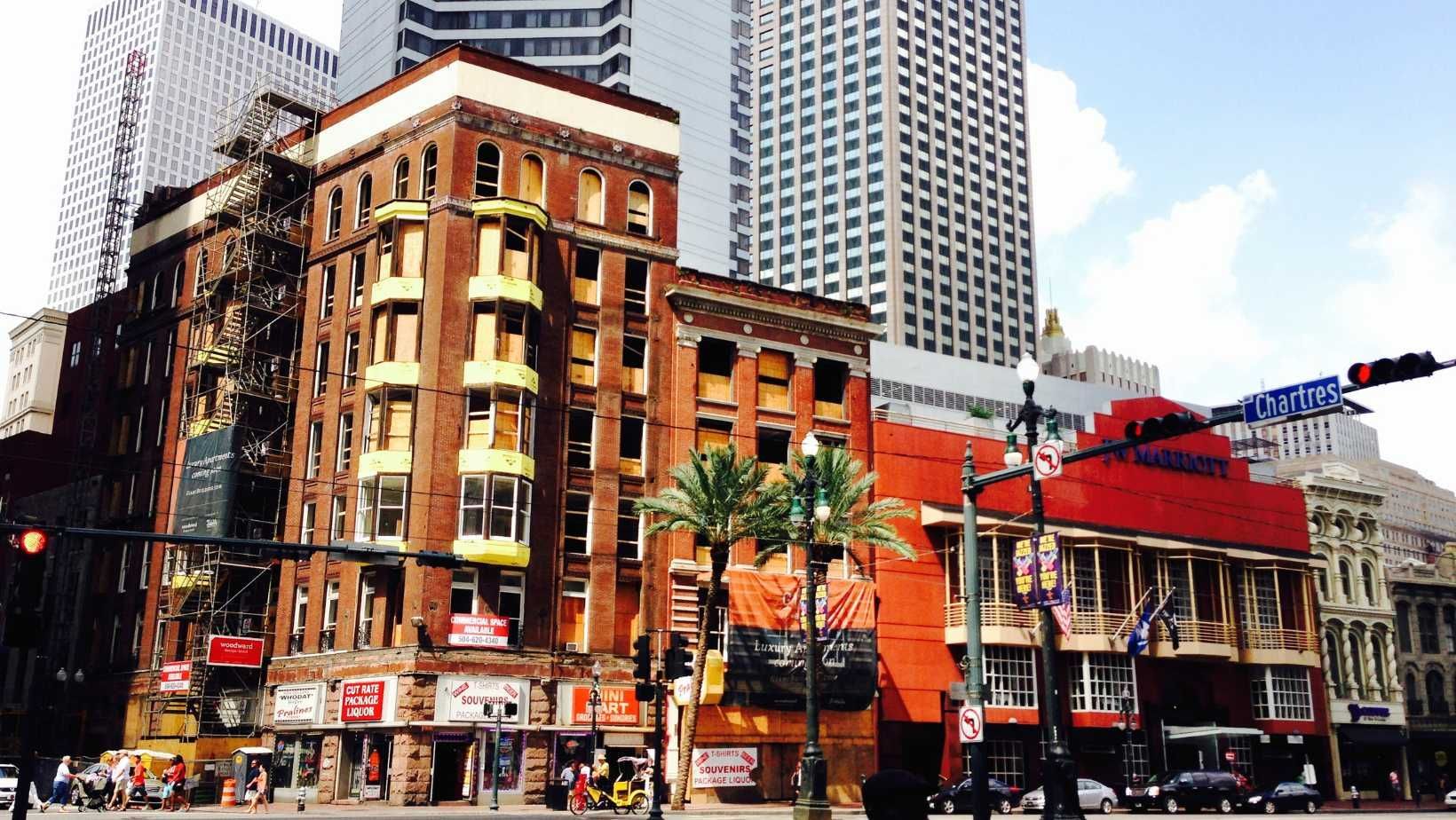
Common Causes of Water Damage in Historical Buildings
Water damage in historical buildings can be attributed to various factors, including natural disasters, aging infrastructure, and inadequate maintenance practices. Flooding, leaky roofs, burst pipes, and condensation are common culprits of water damage in historical buildings, posing a significant threat to their structural integrity. For instance, the flooding of a historic mansion due to heavy rainfall resulted in extensive water infiltration, leading to damage to the original wooden floors and decorative plasterwork. Understanding the common causes of water damage is essential in developing effective mitigation strategies to protect historical buildings from potential harm.
Inadequate maintenance practices, such as neglecting roofing repairs or failing to address plumbing issues, can exacerbate the vulnerability of historical buildings to water damage. For example, a lack of regular roof inspections on a 19th-century townhouse resulted in unnoticed leaks that eventually led to water seepage and interior damage. Proximity to water bodies, such as rivers or lakes, can also increase the risk of water infiltration in historical buildings, making them more susceptible to moisture-related issues. By addressing these common causes of water damage and implementing proactive maintenance measures, preservationists can mitigate risks and ensure the longevity of these architectural treasures.
Age-related wear and tear play a significant role in the susceptibility of historical buildings to water damage. Deteriorating mortar, aging plumbing systems, and decaying wooden elements are common issues faced by these structures, making them more prone to moisture infiltration. For instance, the restoration of a centuries-old farmhouse revealed extensive wood rot in the beams and columns due to prolonged exposure to water, necessitating specialized repairs to reinforce the structural integrity of the building. By addressing age-related vulnerabilities and implementing preventive maintenance strategies, preservationists can protect historical buildings from the detrimental effects of water damage and ensure their continued preservation for future generations.
Impact of Water Damage on Architectural Features
Water damage can have a profound impact on the architectural features of historical buildings, compromising their aesthetic appeal and structural integrity. Ornate cornices, intricate woodwork, and decorative plasterwork are particularly vulnerable to water infiltration, leading to degradation and decay over time. For example, the prolonged exposure to moisture can cause efflorescence and staining of masonry elements, diminishing the visual charm of historical structures. Additionally, mold growth resulting from water damage not only affects the appearance of architectural features but also poses health risks to occupants and preservation specialists. By understanding the impact of water damage on architectural elements, preservation efforts can be tailored to address these challenges effectively.
Moisture infiltration can cause significant damage to unique architectural features, such as ornate cornices and intricate wood carvings, compromising the historical authenticity of historical buildings. For instance, water seepage into the ornate ceiling of a grand ballroom led to the deterioration of the decorative plasterwork, requiring meticulous restoration to preserve the original design. Efflorescence, staining, and spalling of masonry elements are common consequences of water damage, affecting both the aesthetic and structural aspects of historical buildings. By addressing these issues promptly and employing specialized restoration techniques, preservationists can protect the architectural features that define the historical significance of these structures.
Water damage can lead to the deterioration of wooden elements in historical buildings, including beams, panels, and flooring, compromising their structural stability and aesthetic appeal. For example, a water-damaged historic mansion experienced extensive wood rot in the original oak beams due to prolonged exposure to moisture, necessitating comprehensive restoration to prevent further decay. Mold growth resulting from water infiltration can further exacerbate the damage, posing risks to the structural integrity of the building and the health of occupants. By implementing preservation-friendly restoration methods and preventive measures, preservationists can safeguard the unique architectural features of historical buildings from the detrimental effects of water damage.
Challenges in Restoring Water-Damaged Historical Buildings
Restoring water-damaged historical buildings presents a myriad of challenges that require meticulous planning, specialized expertise, and adherence to preservation standards. Matching historic materials, preserving authenticity, and complying with preservation guidelines are significant challenges faced in the restoration of water-damaged historical buildings. For example, sourcing authentic lime mortar for repointing centuries-old brickwork or finding reclaimed timber for restoring wooden elements can be a daunting task that requires extensive research and craftsmanship. The delicate balance between structural reinforcement and preservation of original features necessitates expert knowledge and experience in historical restoration.
Limited access to specialized restoration craftsmen and traditional building materials further complicates the restoration process for historical structures. For instance, a lack of skilled artisans proficient in traditional restoration techniques can delay the repair of intricate wood carvings or decorative plasterwork in a water-damaged historical building. Balancing the need for structural stability with the preservation of historical authenticity requires careful planning and meticulous execution to ensure that the original character of the building is retained. By addressing these challenges with innovative solutions and collaborative efforts, preservationists can overcome restoration obstacles and safeguard the cultural heritage embodied in historical buildings.
Preservation of historical buildings requires a delicate balance between restoration, conservation, and adaptive reuse to ensure their longevity. The restoration of a water-damaged historical landmark involves not only repairing visible damage but also safeguarding the intangible heritage embedded in every architectural detail. For instance, the meticulous restoration of a 19th-century courthouse damaged by flooding required a combination of traditional craftsmanship and modern techniques to preserve its historical integrity. Limited access to specialized restoration materials, such as authentic lime mortar or period-specific wood finishes, can pose challenges in maintaining the historical accuracy of the building. By navigating these restoration challenges with creativity and expertise, preservationists can ensure that the architectural legacy of historical buildings endures for future generations to appreciate.
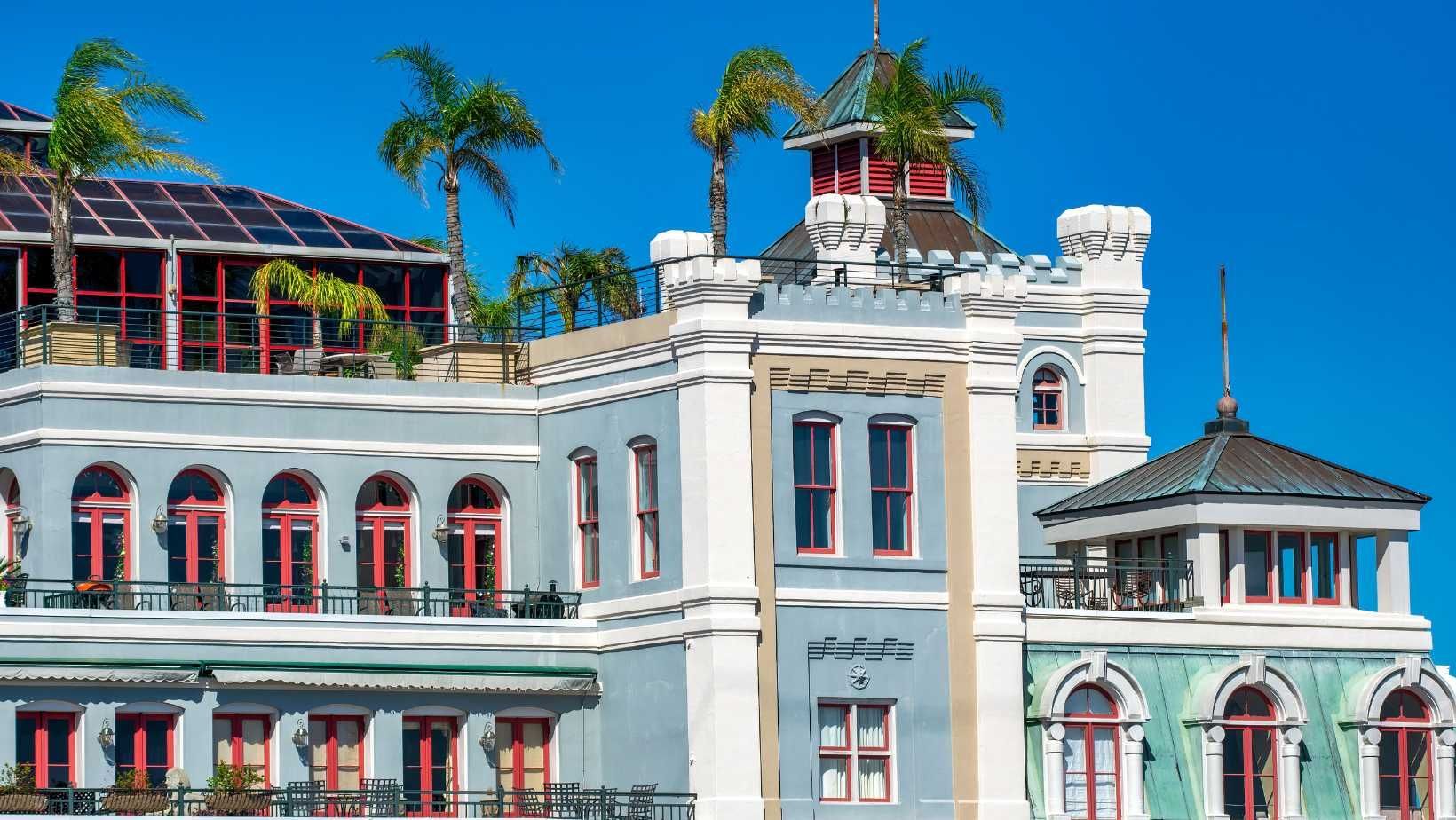
Techniques and Strategies in Water Damage Restoration
Water damage restoration for historical buildings involves a comprehensive approach that combines traditional craftsmanship with modern technologies to preserve the historical integrity of these structures. Gentle cleaning methods, such as surface cleaning and material-specific treatments, are commonly used to remove water-related contaminants while protecting the original finishes. For example, in the restoration of a water-damaged Victorian mansion, preservationists employed gentle scrubbing techniques and eco-friendly cleaning agents to restore the intricate wallpaper and decorative moldings. By utilizing specialized cleaning methods, historical buildings can be rejuvenated without compromising their authenticity.
Advanced technologies play a crucial role in assessing the extent of water damage and identifying hidden moisture pockets in historical buildings. For instance, the use of thermal imaging cameras and non-destructive testing methods helps restoration specialists pinpoint areas of concern, allowing for targeted restoration efforts. Moisture mapping and infrared thermography are effective tools in evaluating structural integrity and detecting water infiltration, enabling preservationists to develop precise restoration plans. Preservation-friendly waterproofing solutions, efficient drainage systems, and climate control measures form integral components of water damage restoration strategies for historical structures. By incorporating these techniques, historical buildings can be safeguarded against future water-related issues, ensuring their long-term preservation.
In the restoration of water-damaged historical buildings, the preservation of unique architectural features requires specialized techniques and craftsmanship to maintain historical authenticity. For example, the repointing of deteriorated mortar joints using traditional lime-based mortars helps retain the original appearance and structural stability of brickwork. Wooden elements, such as beams and flooring, are restored using period-specific materials and techniques to ensure historical accuracy. Preservation-friendly waterproofing solutions, such as breathable lime coatings and heritage-compatible sealants, are applied to protect historical structures from future water damage. By combining traditional restoration methods with modern technologies, preservationists can effectively restore water-damaged historical buildings while preserving their architectural significance.
Importance of Community Engagement in Preservation Efforts
Community engagement plays a crucial role in the preservation of historical buildings after water damage, fostering a sense of ownership, pride, and stewardship over these cultural treasures. By involving local residents in preservation initiatives, communities develop a vested interest in protecting historical structures and ensuring their long-term sustainability. For example, a community-led fundraising campaign to restore a water-damaged historic theater not only raised necessary funds but also united residents in a shared goal of preserving cultural heritage.
Educational workshops and outreach programs are instrumental in raising awareness about the importance of preserving historical buildings from water damage. These initiatives not only educate the community about the architectural significance of historical structures but also empower individuals to actively participate in restoration projects. For instance, a workshop on heritage conservation and water damage mitigation attracted history enthusiasts and preservationists, encouraging collaboration in safeguarding historical buildings. By engaging with historical societies, government agencies, and preservation organizations, communities can amplify their preservation efforts and leverage collective expertise in restoring water-damaged historical structures.
Collaboration with historical societies, government agencies, and preservation organizations enhances the collective efforts to safeguard and restore water-damaged historical structures. For example, a partnership between a local preservation society and a government agency facilitated the restoration of a flood-damaged historic courthouse, showcasing the power of collaborative preservation initiatives. By working together, communities can pool resources, share expertise, and coordinate restoration projects effectively, ensuring the long-term preservation of historical buildings. Educational workshops, fundraising campaigns, and volunteer programs play a vital role in raising awareness about the importance of preserving historical buildings from water damage. By engaging with the local community, preservationists can foster a sense of collective responsibility and stewardship over historical structures, ensuring their continued protection for future generations to appreciate.
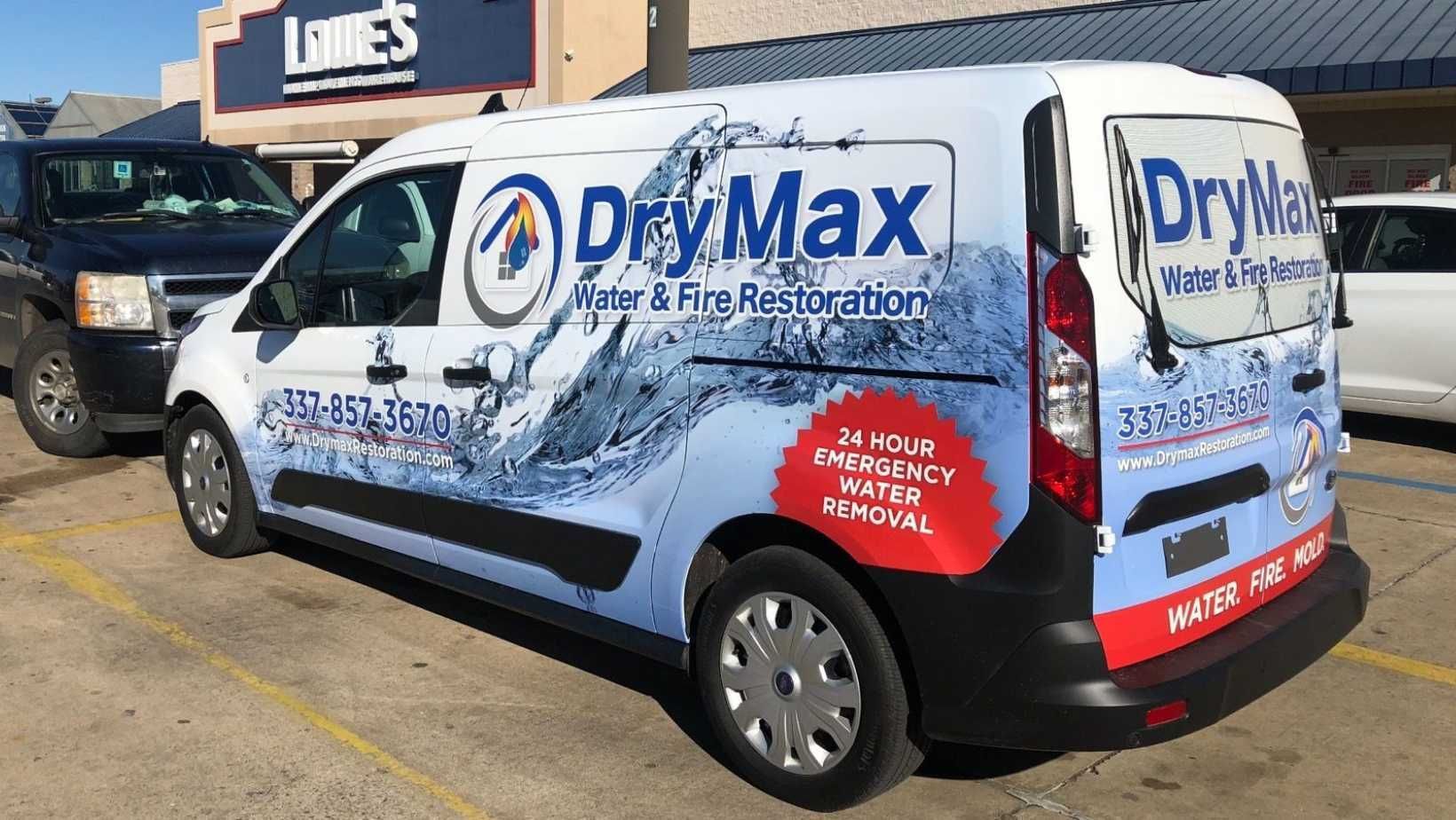
Preventive Measures for Water Damage Mitigation
Implementing preventive measures is essential in protecting historical buildings from water damage and ensuring their long-term preservation. Routine maintenance, proactive inspections, and timely repairs are crucial preventive measures to mitigate water damage risks in historical buildings. For example, regular roof inspections, gutter cleaning, and sealing of exterior surfaces help prevent water infiltration and structural deterioration. By conducting periodic maintenance checks and addressing minor issues promptly, preservationists can prevent extensive water damage and preserve the architectural integrity of historical structures.
Disaster preparedness plans, early warning systems, and regular structural assessments are essential components of a comprehensive preventive strategy against water damage in historical buildings. For instance, the installation of moisture sensors and leak detection devices can provide real-time alerts, allowing for immediate intervention in case of water-related issues. By developing disaster preparedness protocols and conducting regular assessments of historical buildings, preservationists can proactively identify vulnerabilities and implement preventive measures to safeguard these architectural treasures. Compliance with building codes, historic preservation regulations, and best practices in conservation ensures the long-term resilience of historical buildings against water damage. By adhering to established guidelines and standards, preservationists can protect historical structures from potential harm and ensure their continued preservation for future generations to appreciate.
Incorporating preservation-friendly waterproofing solutions, efficient drainage systems, and climate control measures are integral components of water damage prevention strategies for historical buildings. For example, the installation of breathable lime-based coatings on exterior walls and heritage-compatible sealants on windows helps protect historical structures from water infiltration. Implementing advanced drainage systems, such as French drains and sump pumps, can efficiently manage stormwater runoff and prevent flooding around historical buildings. By integrating these preventive measures into restoration plans, preservationists can mitigate the risks of water damage and ensure the longevity of historical structures. To learn more about protecting historical buildings from water damage, visit DryMax Mold's website at DryMax Mold for expert insights and professional services.
Adaptation Strategies for Flood-Prone Historical Buildings
Historical buildings located in flood-prone areas require tailored adaptation strategies to mitigate the risks of water damage and protect their structural integrity. Elevating electrical systems, installing flood barriers, and using permeable paving are effective adaptation strategies for safeguarding flood-prone historical buildings from water damage. For example, the elevation of electrical systems above potential flood levels prevents damage to critical infrastructure components during flooding events, ensuring the safety of occupants and preserving historical buildings. The installation of flood barriers acts as a protective measure against rising waters, preventing flood infiltration and interior damage in historical structures.
Implementing green infrastructure, such as rain gardens and bioswales, can help manage stormwater runoff and reduce the risk of flooding for historical buildings. By incorporating permeable paving and green spaces around historical structures, communities can enhance water management practices and minimize the impact of flooding on architectural heritage. Engaging with experts in flood risk assessment, historic preservation, and architectural conservation is essential in developing tailored adaptation strategies for flood-prone historical buildings. For instance, collaboration with preservation specialists and environmental engineers can help communities identify vulnerabilities, assess risks, and implement sustainable adaptation measures to protect historical structures from water damage. By leveraging expertise and adopting innovative strategies, communities can enhance the resilience of historical buildings against water-related challenges, ensuring their continued preservation for future generations.
The preservation and restoration of water-damaged historical buildings are essential to safeguarding our cultural heritage, promoting historical literacy, and fostering a sense of collective memory and identity. By protecting architectural treasures from the detrimental effects of water damage, communities ensure that the stories, traditions, and achievements of past generations are preserved for future appreciation.
Explore professional services like water damage restoration and mold remediation by visiting DryMax Mold's website at
DryMax Mold to learn more about protecting historical buildings from water damage.
You might also like
DryMax Restoration Blogs
